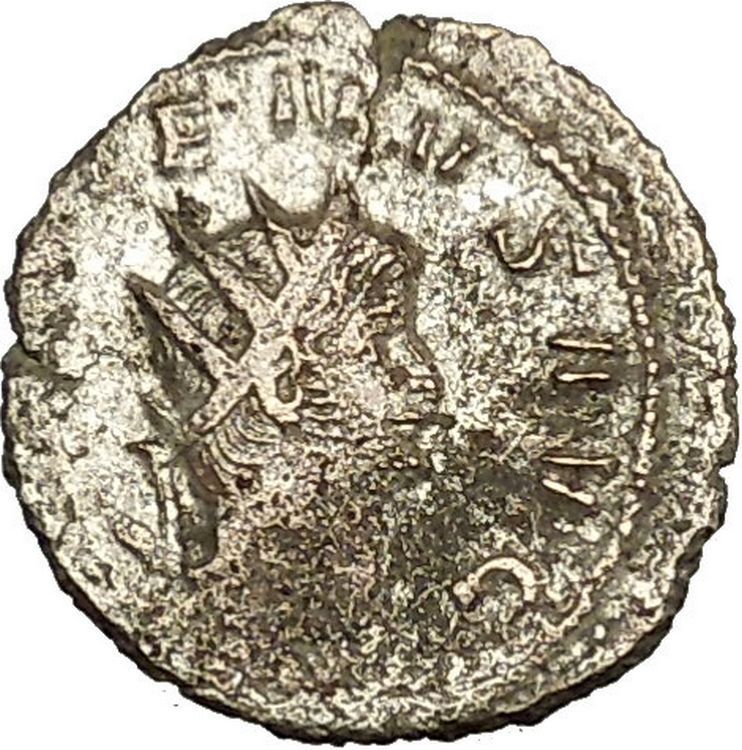|
Roman Imperial.
Festival of Isis or ‘Great Persecution‘ of Christians Issue
Bronze AE4 16mm (1.73 grams) Alexandria mint, struck circa 350 A.D. or circa 305-313 A.D.
Reference: Cf. Alföldi, Isis 121 (pl. III, 36); cf. Vagi 3384
Certification: NGC Ancients Ch VF Strike: 4/5 Surface: 4/5 4934566-007
DEO SANCTO SERAPIDI, head of Serapis right, wearing modius.
DEO SANCTO NILO / ALE, Nile reclining left, holding reed and ship.
Researching this coin, it is most often attributed to the Festival of Isis including by the experts at CNG, as opposed to the Great Persecution. The book written by David Vagi describes this type.
Quoting David Vagi in Volume 2, page 570, he states under Anonymous Coins of the Festival of Isis
“Except where noted, coins with Isis alone have the obverse inscription ISIS FARIA; all others are inscribed DEO SARAPIDI or DEO SERAPIDI.”
My expert opinion is that it doesn’t fit the standard types of the Great Persecution that I have also in my eBay store because those did not have any similar inscriptions or iconography of this type. The Great Persecution types also don’t have DEO SERAPIDI inscription on them either.
You are bidding on the exact item pictured, provided with a Certificate of Authenticity and Lifetime Guarantee of Authenticity.
The Diocletianic or Great Persecution was the last and most severe Persecution of Christians in the Roman Empire. In 303, the Emperors Diocletian, Maximian, Galerius, and Constantius issued a series of edicts rescinding the legal rights of Christians and demanding that they comply with traditional Roman religious practices. Later edicts targeted the clergy and ordered all inhabitants to sacrifice to the Roman gods (a policy known as universal sacrifice). The persecution varied in intensity across the empire-weakest in Gaul and Britain, where only the first edict was applied, and strongest in the Eastern provinces. Persecutory laws were nullified by different emperors at different times, but Constantine and Licinius’s Edict of Milan (313) has traditionally marked the end of the persecution.

The Christian Martyrs’ Last Prayer, by Jean-Léon Gérôme (1883)
Christians had always been subject to local discrimination in the empire, but early emperors were either too reluctant to issue general laws against them or, at least in the 3rd century (see Crisis of the Third Centuryy), too caught up with more immediate issues to do so. It was not until the 250s, under the reigns of Decius and Valerian, that such laws were passed. Under this legislation, Christians were compelled to sacrifice to Roman gods or face imprisonment and execution. When Gallienus acceded in 260, he issued the first imperial edict regarding tolerance toward Christians, leading to nearly 40 years of peaceful coexistence. Diocletian’s accession in 284 did not mark an immediate reversal of disregard to Christianity, but it did herald a gradual shift in official attitudes toward religious minorities. In the first fifteen years of his rule, Diocletian purged the army of Christians, condemned Manicheans to death, and surrounded himself with public opponents of Christianity. Diocletian’s preference for autocratic government, combined with his self-image as a restorer of past Roman glory, presaged the most pervasive persecution in Roman history. In the winter of 302, Galerius urged Diocletian to begin a general persecution of the Christians. Diocletian was wary, and asked the oracle of Apollo for guidance. The oracle’s reply was read as an endorsement of Galerius’s position, and a general persecution was called on February 24, 303.
Persecutory policies varied in intensity across the empire. Where Galerius and Diocletian were avid persecutors, Constantius was unenthusiastic. Later persecutory edicts, including the calls for universal sacrifice, were not applied in his domain. His son, Constantine, on taking the imperial office in 306, restored Christians to full legal equality and returned property that had been confiscated during the persecution. In Italy in 306, the usurper Maxentius ousted Maximian’s successor Severus, promising full religious toleration. Galerius ended the persecution in the East in 311, but it was resumed in Egypt, Palestine, and Asia Minor by his successor, Maximinus. Constantine and Licinius, Severus’s successor, signed the Edict of Milan in 313, which offered a more comprehensive acceptance of Christianity than Galerius’s edict had provided. Licinius ousted Maximinus in 313, bringing an end to persecution in the East.
The persecution failed to check the rise of the church. By 324, Constantine was sole ruler of the empire, and Christianity had become his favored religion. Although the persecution resulted in death, torture, imprisonment, or dislocation for many Christians, the majority of the empire’s Christians avoided punishment. The persecution did, however, cause many churches to split between those who had complied with imperial authority (the traditores), and those who had remained “pure”. Certain schisms, like those of the Donatists in North Africa and the Meletians in Egypt, persisted long after the persecutions. The Donatists would not be reconciled to the Church until after 411. In the centuries that followed, some historians claim that Christians created a “cult of the martyrs”, and exaggerated the barbarity of the persecutory era. These accounts were criticized during the Enlightenment and afterwards, most notably by Edward Gibbon. Modern historians, such as G. E. M. de Ste. Croix, have attempted to determine whether Christian sources exaggerated the scope of the Diocletianic persecution.
|















